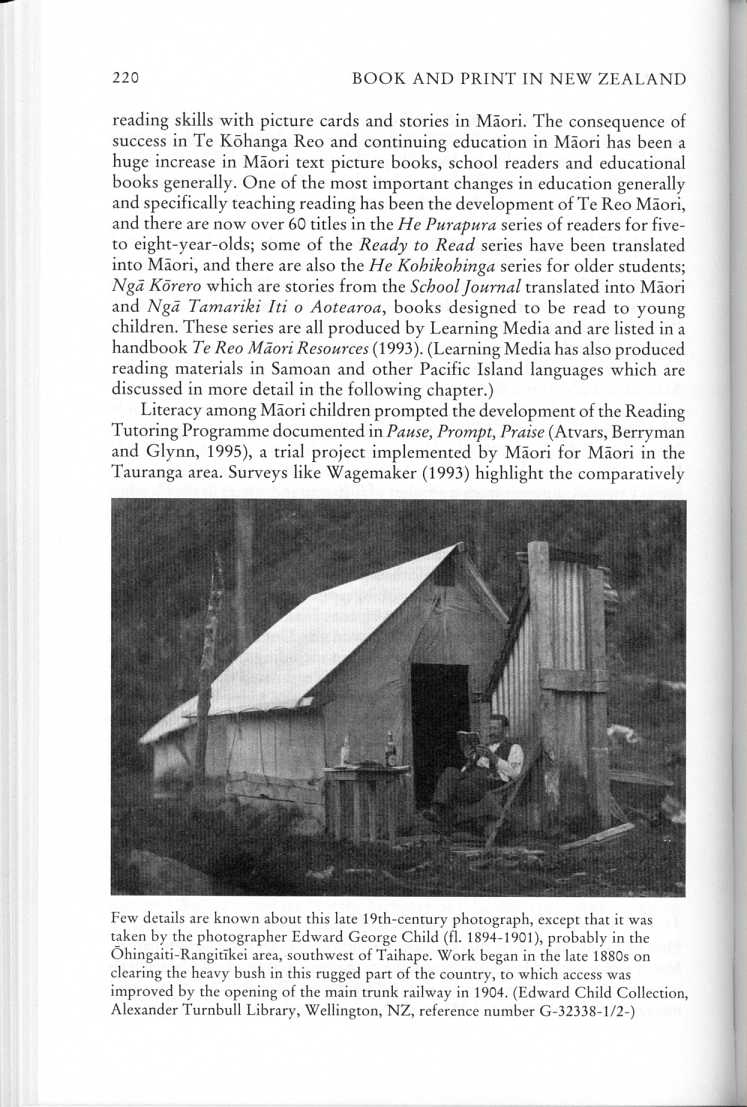Te Reo and literacy programmes for Mäori
One of the initiatives of the Tü Tangata philosophy of the
Department of Maori Affairs in the late 1970s was the establishment of
the Te Köhanga Reo movement in 1977. The primary aim of Te
Köhanga Reo is to encourage and increase the development of
Mäori spoken language but they also begin pre-reading skills
with picture cards and stories in Mäori. The consequence of
success in Te Köhanga Reo and continuing education in
Mäori has been a huge increase in Mäori text picture
books, school readers and educational books generally. One of the most
important changes in education generally and specifically teaching
reading has been the development of Te Reo Mäori, and there are
now over 60 titles in the He Purapura series of
readers for five-to eight-year-olds; some of the Ready
to Read series have been translated into Mäori, and
there are also the He Kohikohinga series for
older students; Ngä Körero
which are stories from the School Journal
translated into Mäori and Ngä
Tamariki Iti o Aotearoa , books designed to be read to young
children. These series are all produced by Learning Media and are listed
in a handbook Te Reo Mäori Resources
(1993). (Learning Media has also produced reading materials in Samoan
and other Pacific Island languages which are discussed in more detail in
the following chapter.)
Literacy among
Mäori children prompted the development of the Reading Tutoring
Programme documented in Pause, Prompt, Praise
(Atvars, Berryman and Glynn, 1995), a trial project implemented by
Mäori for Mäori in the Tauranga area. Surveys like
Wagemaker (1993) highlight the comparatively poor performance of Mäori and Polynesian children in
reading achievement and there are as yet no PAT tests for children
learning reading in Mäori. Children's reading achievement in
Mäori is discussed in Köhanga Reo
Let's Celebrate (1992). Mäori
Literacy and Numeracy (Irwin, Davies and Harre Hindmarsh, 1995)
puts Mäori literacy generally into the context of colonial and
post-colonial political and discursive processes and discusses the
collision of an oral tradition with the world of literacy.
